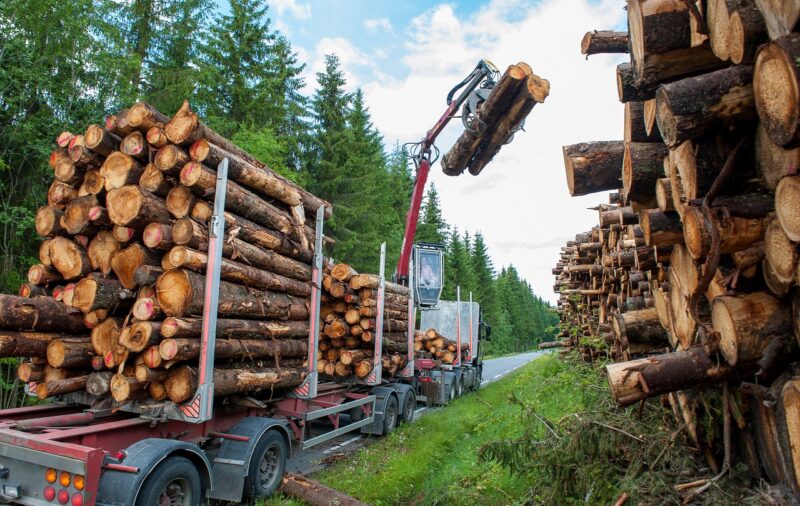Published: 08/10/24 By: Mike Bekin
When you are sawing a timber board or cleaning down your new timber decking, do you ever think about the journey that wood has been on to get to your hands? If you do, you are not alone. At EcoChoice, we pride ourselves on being transparent about the timber processing journey, and we work with sustainable organisations, such as the FSC and PEFC, who hold the same values of transparency in the supply chain as we do.
With that in mind, we thought it would be interesting to look at the journey from woodland to workshop. When you choose an EcoChoice timber board, from where does it come?
Sustainable Forests: Where the Journey Starts
All EcoChoice timber starts its life in an FSC or PEFC-certified woodland. In these spaces, conservation, biodiversity and community are core principles, and the forests are farmed with this in mind. The tree which grew your timber would be surrounded by lush greenery and wildlife, and the people who worked to grow and care for the tree would be treated fairly and paid a good wage.
This gives you (and us) the peace of mind that the timber you use has a sustainable start in life.
Timber Harvesting
In sustainable woodlands, it is important that:
- No single space or area is overharvested
- No single species is overharvested
This means that your tree will have been selected carefully, ensuring the health of the entire forest is protected even while felling. After being chosen and marked, a team will have used chainsaws and logging machinery to fell the tree, and then transported it out of the woodland (take a look at this innovative skylining method to see the future of sustainable timber transportation).
Timber Milling, Grading, and Sorting
After harvesting, the tree will be transported to the sawmill where it is turned from a pretty un-useful trunk into useful timber boards. This is done through a process called milling, which involves:
- Removing the bark from the timber
- Cutting the timber into boards and planks
- Drying the timber so that it reaches the correct moisture content for our purposes
Timber Grading and Planing
After drying, the timber is graded to assess its quality and final application. This involves inspecting knots, splits and warping in the timber, all of which can affect how strong and durable the board is. Timber with higher grades goes onto structural applications, such as beams and decking.
Once the intended use is finalised, the timber might undergo additional processing. This includes planing to smooth the surface, applying treatments required to enhance durability and resistance and finishing with stains and sealants.
Delivery to EcoChoice
Once the timber is graded, planed and is ready to go, it is packaged and shipped to EcoChoice. We will then make sure it is in tip-top condition making sure to deliver high-quality timber to your site with super quick delivery.
Source Sustainable Timber at EcoChoice
Now you know the journey of timber from woodland to workshop, you might be feeling inspired to take on a new timber project. If so, we have got just what you need. Start browsing our sustainable timber products at EcoChoice today and become a part of the timber journey.
Tags: timber processing
Categories: Insights
